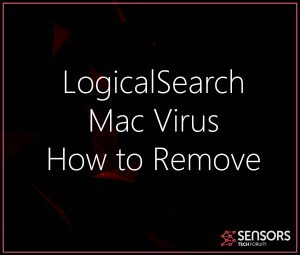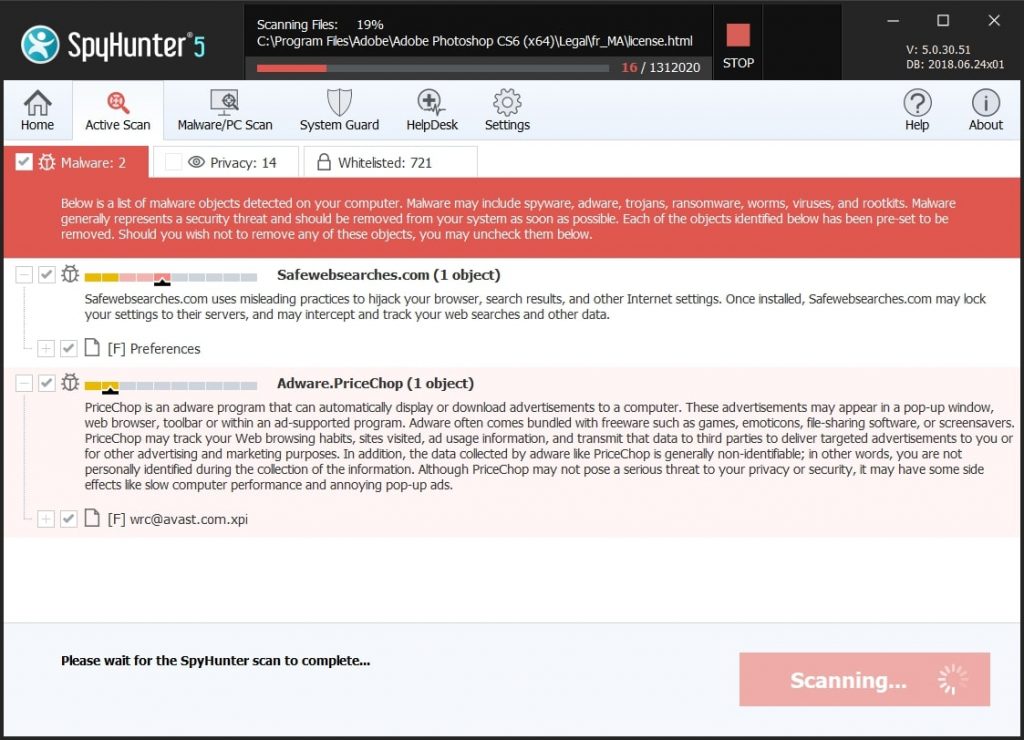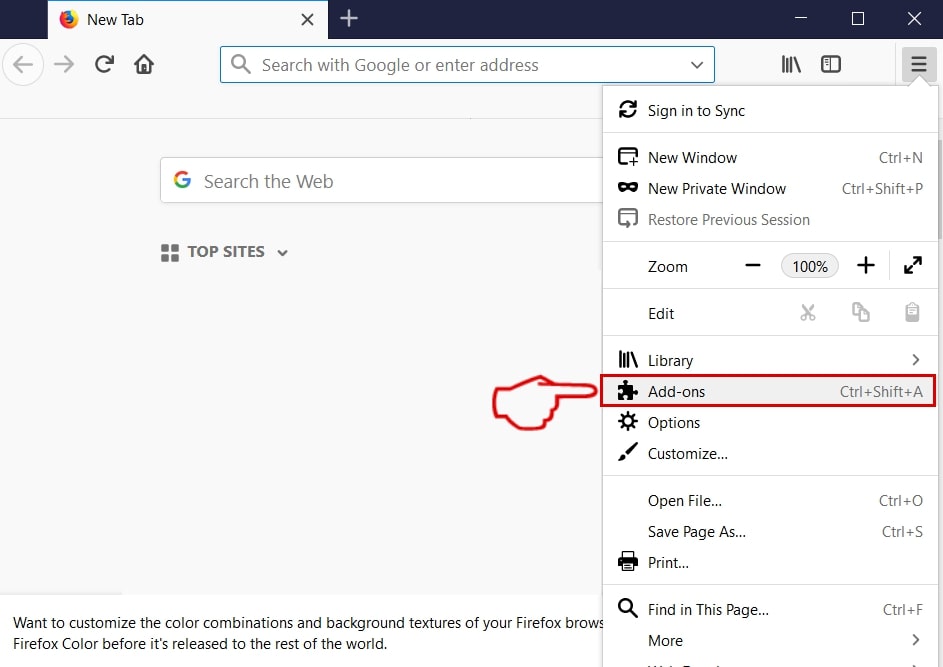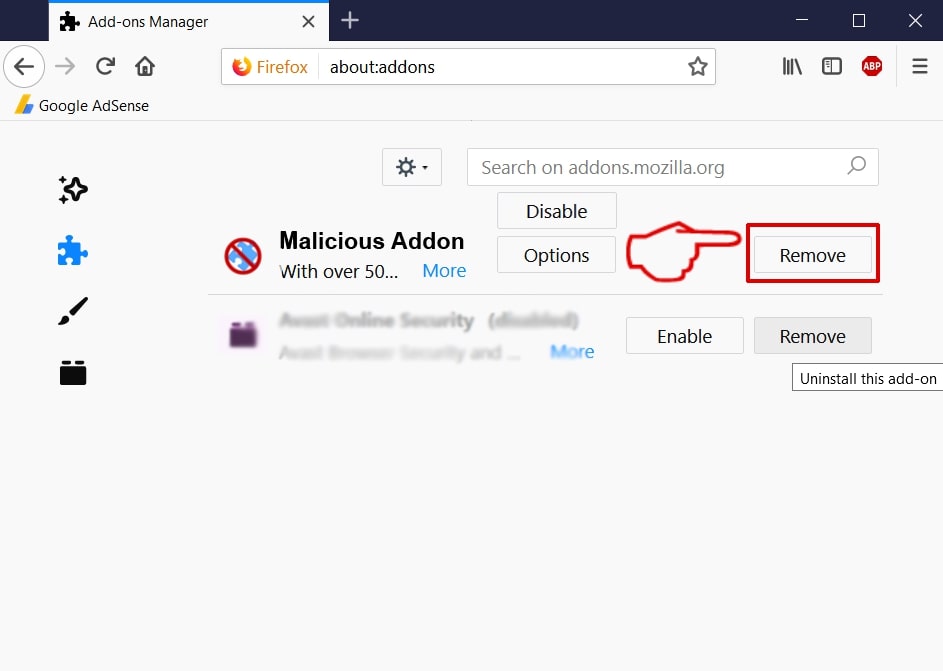 This is an explanatory post that will aid you get rid of LogicalSearch from Google Chrome, your Mac, Mozilla Firefox, Safari web browser, Apple iPhone and Windows 10.
This is an explanatory post that will aid you get rid of LogicalSearch from Google Chrome, your Mac, Mozilla Firefox, Safari web browser, Apple iPhone and Windows 10.
Many people have begun to complaing relating to the so-called LogicalSearch. LogicalSearch is basically a software application that can be included in your Mac or Windows tool and start to change the setups on it. The essence behind such undesirable programs is to take control of your system as well as web browsers as well as transform setups within them. This will successfully permit the LogicalSearch redirect software program to reveal all sorts of internet browser transfers as well as lead you to sites that might even threaten. This is why, we suggest you to read this write-up. It will certainly help you obtain aware of the redirect infections that are around and also reveal you understanding on swiftly removing those dangerous software from your Windows, Mac as well as web internet browsers.

Threat Summary
| Name | LogicalSearch |
| Type | Browser Hijacker for Mac OS |
| Short Description | LogicalSearch Hijacks your browser in order to display all sorts of ads. |
| Symptoms | LogicalSearch aims to show banners, redirects, pop-ups and other forms of advertisements. |
| Distribution Method | LogicalSearch can be spread via software bundling or by being downloaded from the web. |
| Detection Tool |
See If Your System Has Been Affected by malware
Download
Combo Cleaner
|
User Experience | Join Our Forum to Discuss LogicalSearch. |

LogicalSearch – How Did I Get It and What Does It Do?
There are all sorts of redirect viruses out there and also they all propagate in different ways. According to recent data, most of the redirect infections like LogicalSearch are usually concealed as different sorts of programs:
- Browser extensions.
- Applications (for Mac).
- Handy software program (for Windows).
- Reroute manuscripts on a toolbar or a web page you might go to.
- Malware, hidden on your computer. (like a Trojan.Clicker).
Out of those, one of the most extensive type of redirect causing software is via programs or extensions for your browser. These two main types could spread through one of the folloiwng means:
- If you happen to download LogicalSearch to your computer by going to a website, that is advertising them as a valuable program.
- If you mount an additional complimentary application and LogicalSearch is consisted of in the setup actions, promoted as a “free additional” included in the installation.
As soon as on your computer system, many redirect viruses do not limit themselves to only assaulting your computer system. Their major focus is your online activity as well as more notably your internet browser movements. One of the most typically utilized web browsers usually succumb reroute viruses:
- Safari.
- Microsoft Edge.
- Mozilla Firefox.
- Google Chrome.
- Opera.
- Internet Explorer.
In extremely rare occasions, the LogicalSearch redirect virus itself might represent a browser to make sure that it slithers ads unblocked as well as runs in the background, similar to a virus would certainly do. Such situation is typical for the Chromium-style redirect infections. They are bascially revamped internet browsers that use the source code of Google Chrome and often imitate it, yet include advertisements and others. Instances for such fake web browsers are Colorful web browser, Lantern web browser and also Mustang web browser, every one of which caused immense ammount of redirects and ads that reduced the devices they are installed on immensely.
When LogicalSearch is set up on your Mac, it will certainly not just change your internet browsers. It might additionally strike your Mac repositories and also create all sorts of entries and things there. The main idea is even if you delete the LogicalSearch redirect infection itself, the damages it might have done to your Mac or Windows machine might still continue to be. This is why many people that utilize traditional anti-viruses software program commonly grumble that they still see ads as well as redirects after getting rid of an adware or a redirect virus.
The LogicalSearch ads that may be shown by a redirect infection are not simply redirects. You could also start to see the following marketed material:
- Push notices.
- Pop-ups.
- Highlighted message ads.
- Web banners.
- Ad-supported search results page, presented by a scam online search engine.
Typically, ad-supported search results page, like LogicalSearch could start to show up on your computer system if a redirect virus is included. What it does Is the infection may transform your New tab as well as Home page to make sure that as opposed to Google, Bing or various other search, you can see a hoax search page, produced by the redirect malware itself. Such pages are unreal search engines and they make use of the results of other databases that permit them to crawl advertisements in your search results page instead of unbiased info that you need to depend on.
Not only this, but additionally a redirect virus on your computer system might begin to use monitoring innovations to see what you look, where you click as well as also what you type while online and also this is often hidden behind deceitful Privacy Plan that is difficult to discover as well as has some questionable practices in it. The trackers that might be used by a redirect infection on your Mac or Windows maker could be the following:
- Tags.
- Geo-locators.
- Cookies.
- Pixels.
- LSOs (Locally Shared Objects).
The ads that are shown by the redirect virus risks can bring about various internet sites. Some may be genuine merchants that intend to drive website traffic to themsevles by paying off redirect virus programmers and some may be more risky sites. We are discussing the adhering to threats, assoicated with a redirect:
- Your Mac can be pushed to download a technology support rip-off that asks you to call a number or download rogue software by lying to you that your Mac or PC is infected.
- You could be rerouted to a phishing page that asks you to login to your DHL, PayPal or Dropbox account and as a result have your username and password taken.
- You could visit harmful URLs that can cause infection with Miners, Trojans, Rootkits or even Ransomware viruses.

Remove LogicalSearch from Your Mac
Removal of LogicalSearch can be done if you find the data andd items produced by it and erase them. One method to do this is to follow the elimination steps below. They are created so that you can try to find as well as do the removal of the files by hand. Nevertheless, unlike a specialist anti-malware software program, they can not assure a complete elimination, because you could miss some leftover data or setting. This is the major reason why for a complete removal, specialists strongly suggest that you download and also run a scan of your device, using an innovative anti-malware program. Such application will certainly ensure that all of the redirect infection files are found as well as fully gone from your Mac or Windows gadget.
Steps to Prepare Before Removal:
Before starting to follow the steps below, be advised that you should first do the following preparations:
- Backup your files in case the worst happens.
- Make sure to have a device with these instructions on standy.
- Arm yourself with patience.
- 1. Scan for Mac Malware
- 2. Uninstall Risky Apps
- 3. Clean Your Browsers
Step 1: Scan for and remove LogicalSearch files from your Mac
When you are facing problems on your Mac as a result of unwanted scripts and programs such as LogicalSearch, the recommended way of eliminating the threat is by using an anti-malware program. SpyHunter for Mac offers advanced security features along with other modules that will improve your Mac’s security and protect it in the future.

Quick and Easy Mac Malware Video Removal Guide
Bonus Step: How to Make Your Mac Run Faster?
Mac machines maintain probably the fastest operating system out there. Still, Macs do become slow and sluggish sometimes. The video guide below examines all of the possible problems that may lead to your Mac being slower than usual as well as all of the steps that can help you to speed up your Mac.
Step 2: Uninstall LogicalSearch and remove related files and objects
1. Hit the ⇧+⌘+U keys to open Utilities. Another way is to click on “Go” and then click “Utilities”, like the image below shows:

2. Find Activity Monitor and double-click it:

3. In the Activity Monitor look for any suspicious processes, belonging or related to LogicalSearch:


4. Click on the "Go" button again, but this time select Applications. Another way is with the ⇧+⌘+A buttons.
5. In the Applications menu, look for any suspicious app or an app with a name, similar or identical to LogicalSearch. If you find it, right-click on the app and select “Move to Trash”.

6. Select Accounts, after which click on the Login Items preference. Your Mac will then show you a list of items that start automatically when you log in. Look for any suspicious apps identical or similar to LogicalSearch. Check the app you want to stop from running automatically and then select on the Minus (“-“) icon to hide it.
7. Remove any leftover files that might be related to this threat manually by following the sub-steps below:
- Go to Finder.
- In the search bar type the name of the app that you want to remove.
- Above the search bar change the two drop down menus to “System Files” and “Are Included” so that you can see all of the files associated with the application you want to remove. Bear in mind that some of the files may not be related to the app so be very careful which files you delete.
- If all of the files are related, hold the ⌘+A buttons to select them and then drive them to “Trash”.
In case you cannot remove LogicalSearch via Step 1 above:
In case you cannot find the virus files and objects in your Applications or other places we have shown above, you can manually look for them in the Libraries of your Mac. But before doing this, please read the disclaimer below:
1. Click on "Go" and Then "Go to Folder" as shown underneath:

2. Type in "/Library/LauchAgents/" and click Ok:

3. Delete all of the virus files that have similar or the same name as LogicalSearch. If you believe there is no such file, do not delete anything.

You can repeat the same procedure with the following other Library directories:
→ ~/Library/LaunchAgents
/Library/LaunchDaemons
Tip: ~ is there on purpose, because it leads to more LaunchAgents.
Step 3: Remove LogicalSearch – related extensions from Safari / Chrome / Firefox









LogicalSearch-FAQ
What is LogicalSearch on your Mac?
The LogicalSearch threat is probably a potentially unwanted app. There is also a chance it could be related to Mac malware. If so, such apps tend to slow your Mac down significantly and display advertisements. They could also use cookies and other trackers to obtain browsing information from the installed web browsers on your Mac.
Can Macs Get Viruses?
Yes. As much as any other device, Apple computers do get malware. Apple devices may not be a frequent target by malware authors, but rest assured that almost all of the Apple devices can become infected with a threat.
What Types of Mac Threats Are There?
According to most malware researchers and cyber-security experts, the types of threats that can currently infect your Mac can be rogue antivirus programs, adware or hijackers (PUPs), Trojan horses, ransomware and crypto-miner malware.
What To Do If I Have a Mac Virus, Like LogicalSearch?
Do not panic! You can easily get rid of most Mac threats by firstly isolating them and then removing them. One recommended way to do that is by using a reputable malware removal software that can take care of the removal automatically for you.
There are many Mac anti-malware apps out there that you can choose from. SpyHunter for Mac is one of the reccomended Mac anti-malware apps, that can scan for free and detect any viruses. This saves time for manual removal that you would otherwise have to do.
How to Secure My Data from LogicalSearch?
With few simple actions. First and foremost, it is imperative that you follow these steps:
Step 1: Find a safe computer and connect it to another network, not the one that your Mac was infected in.
Step 2: Change all of your passwords, starting from your e-mail passwords.
Step 3: Enable two-factor authentication for protection of your important accounts.
Step 4: Call your bank to change your credit card details (secret code, etc.) if you have saved your credit card for online shopping or have done online activiites with your card.
Step 5: Make sure to call your ISP (Internet provider or carrier) and ask them to change your IP address.
Step 6: Change your Wi-Fi password.
Step 7: (Optional): Make sure to scan all of the devices connected to your network for viruses and repeat these steps for them if they are affected.
Step 8: Install anti-malware software with real-time protection on every device you have.
Step 9: Try not to download software from sites you know nothing about and stay away from low-reputation websites in general.
If you follow these reccomendations, your network and Apple devices will become significantly more safe against any threats or information invasive software and be virus free and protected in the future too.
More tips you can find on our MacOS Virus section, where you can also ask any questions and comment about your Mac problems.
About the LogicalSearch Research
The content we publish on SensorsTechForum.com, this LogicalSearch how-to removal guide included, is the outcome of extensive research, hard work and our team’s devotion to help you remove the specific macOS issue.
How did we conduct the research on LogicalSearch?
Please note that our research is based on an independent investigation. We are in contact with independent security researchers, thanks to which we receive daily updates on the latest malware definitions, including the various types of Mac threats, especially adware and potentially unwanted apps (PUAs).
Furthermore, the research behind the LogicalSearch threat is backed with VirusTotal.
To better understand the threat posed by Mac malware, please refer to the following articles which provide knowledgeable details.













